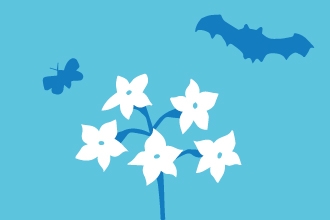I do most of my wildlife recording in the day, generally in the best and brightest weather. But occasionally I find myself out after dark and it’s a whole new experience.
I’m going to state the obvious: it is dark at night, and that is just what the creatures which are out and about at night need. Light is disruptive to them and can affect their survival.
It is well worth exploring the night though, going out to somewhere with no artificial light as night falls and waiting for it to get really dark.
Don’t use a torch, your eyes will steadily adjust and you will be surprised how much you can see especially on a clear, moonlit night. But you will also become aware of other things - small sounds from creatures nearby, maybe the screech of an owl or the bark of a deer or fox. You will become aware of the air itself, small breezes, its temperature, humidity and scents held on the air. It is good to stretch your senses.
If you decide to explore the wider countryside, plan your visit before you go, visit in the day so you know the terrain and are aware of any hazards, make sure you have a charged mobile phone in case of emergencies (but keep it on silent so it doesn't disturb the wildlife!) and preferably don’t go alone.






